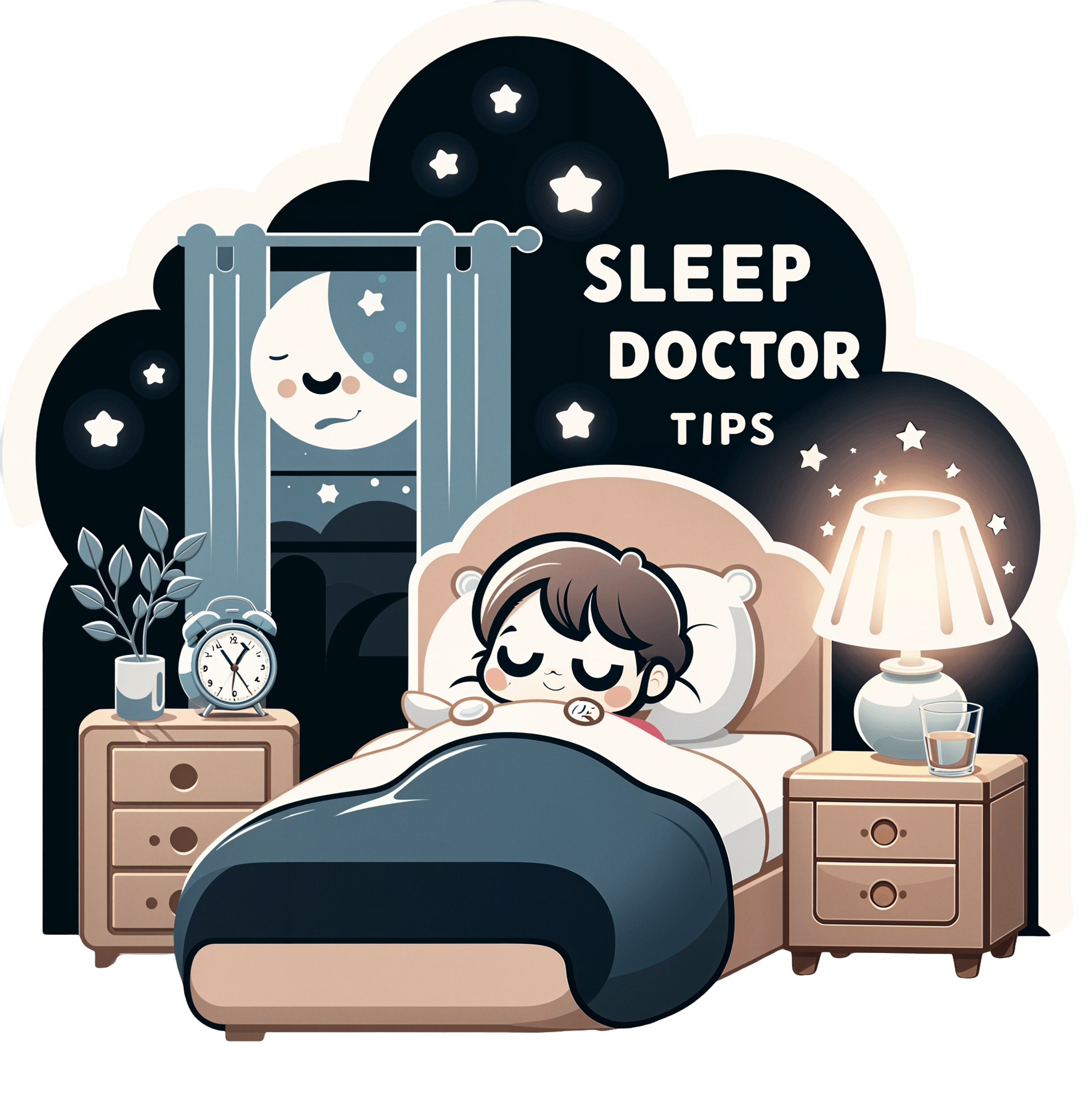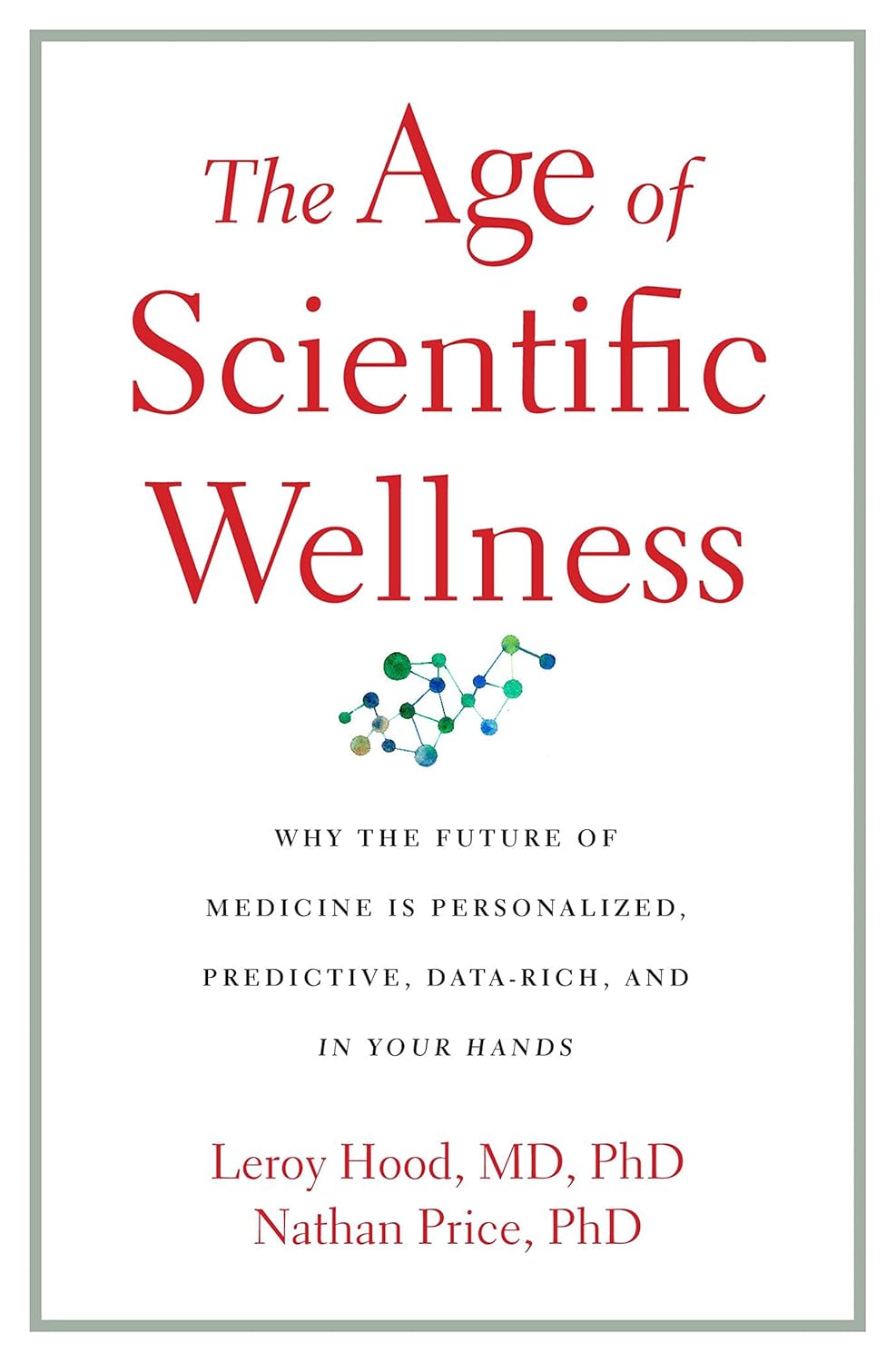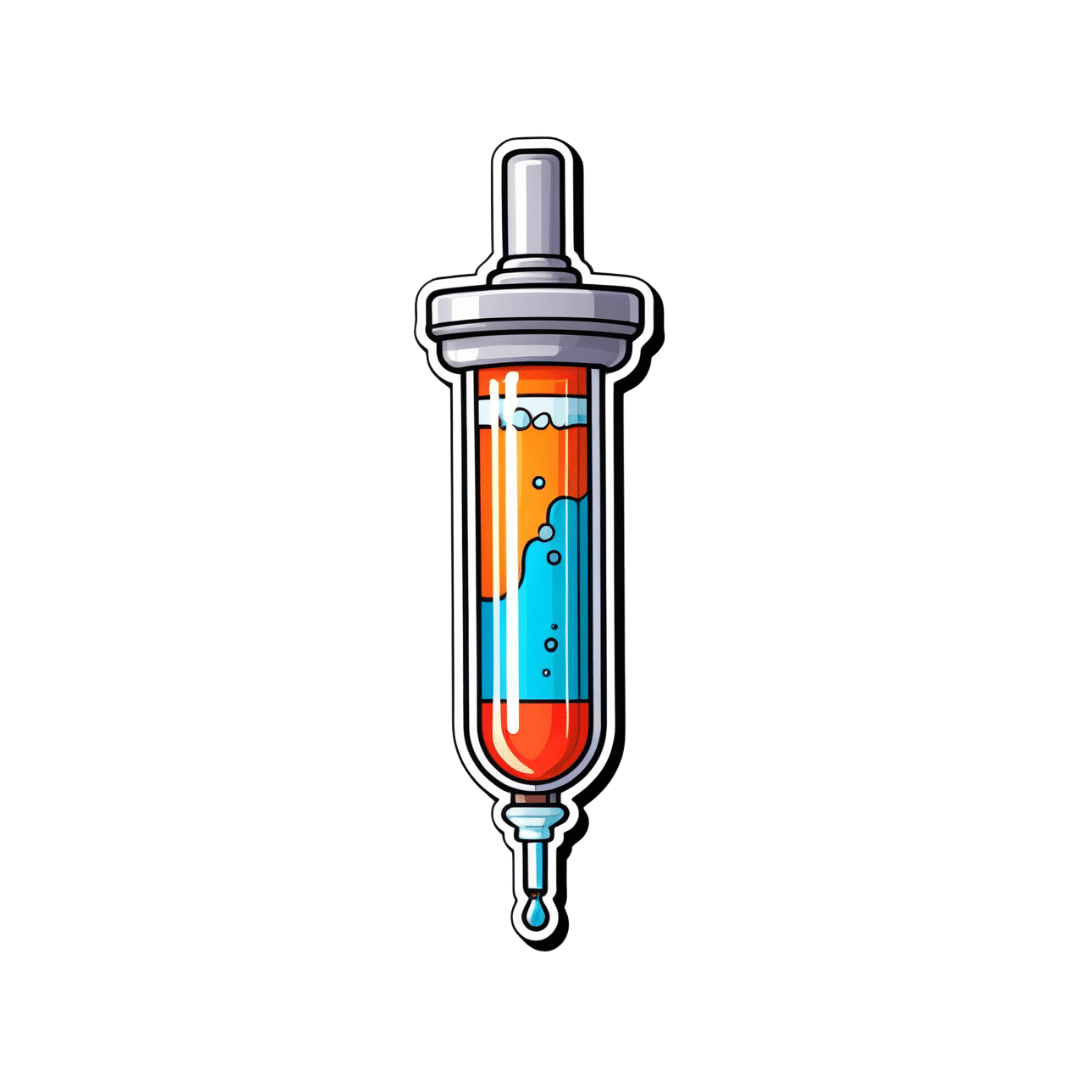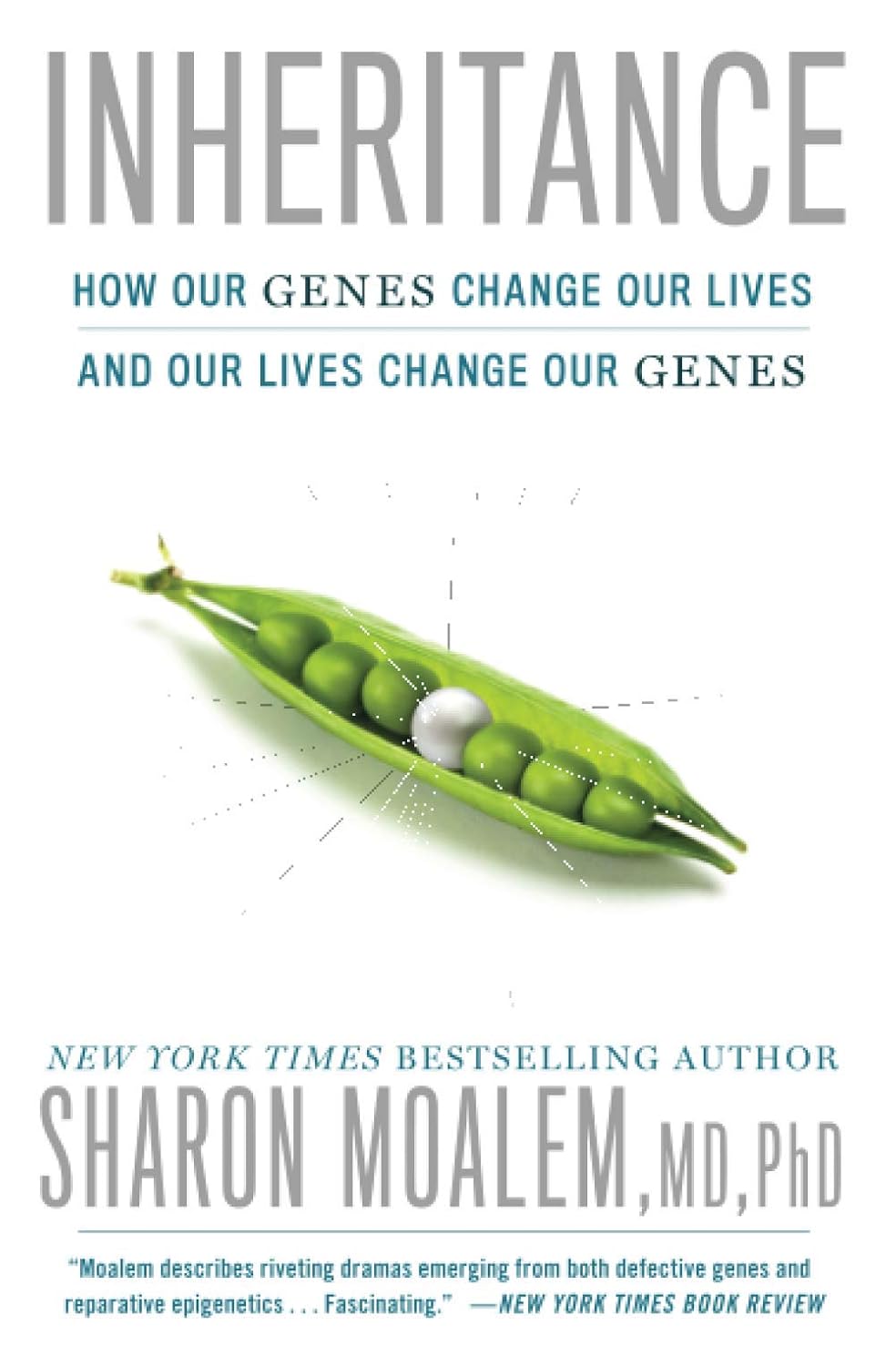
Lifestyle vs Multiple Sclerosis & More
10almonds is reader-supported. We may, at no cost to you, receive a portion of sales if you purchase a product through a link in this article.
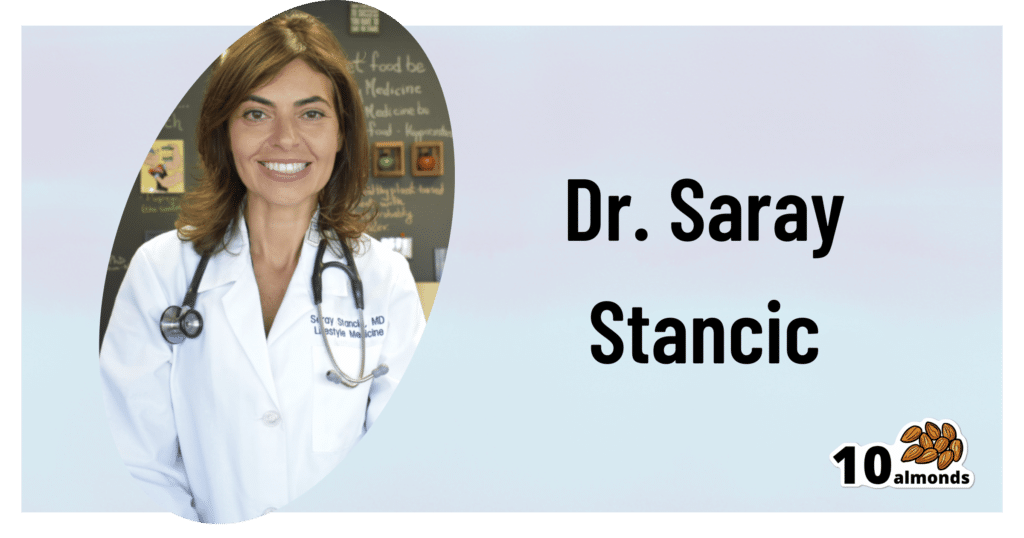
This is Dr. Saray Stancic. She’s another from the ranks of “doctors who got a serious illness and it completely changed how they view the treatment of serious illness”.
In her case, Stancic was diagnosed with multiple sclerosis, and wasn’t impressed with the results from the treatments offered, so (after 8 years of pain, suffering, and many medications, only for her condition to worsen) she set about doing better with an evidence-based lifestyle medicine approach.
After 7 years of her new approach, she would go on to successfully run a marathon and live symptom-free.
All this to say: her approach isn’t a magic quick fix, but it is a serious method for serious results, and after all, while it’d be nice to be magically in perfect health tomorrow, what’s important is being in good health for life, right?
If you’re interested in her impressive story, check out:
Doctor With Multiple Sclerosis On The Collapse Of US Healthcare
If you want to know what she did, then read on…
Six key lifestyle changes
Dr. Stancic credits her recovery to focus on the following evidence-based approaches:
The plant-centered plate
This is critical, and is the one she places most emphasis on. Most chronic diseases are exacerbated, if not outright caused, by chronic inflammation, and one cannot fix that without an anti-inflammatory diet.
An anti-inflammatory diet doesn’t have to be 100% plant-based, but broadly speaking, plants are almost always anti-inflammatory to a greater or lesser degree, while animal products are often pro-inflammatory—especially red meat and unfermented dairy.
For more details, see:
Anti-Inflammatory Diet 101 (What to Eat to Fight Inflammation)
Movement every day
While “exercise is good for you” is in principle not a shocker, remember that her starting point was being in terrible condition with badly flared-up MS.
Important to understand here is that excessive exercise can weaken the immune system and sometimes cause flare-ups of various chronic diseases.
Moving thoroughly and moving often, however, is best. So walking yes, absolutely, but also don’t neglect the rest of your body, do some gentle bodyweight squats (if you can; if you can’t, work up to them), stretch your arms as well as your legs, take all your joints through a full range of motion.
See also:
The Doctor Who Wants Us To Exercise Less, & Move More
Mindful stress management
Stress in life is unavoidable, but how we manage it is up to us. Bad things will continue to happen, great and small, but we can take a deep breath, remember that those things aren’t the boss of us, and deal with it calmly and conscientiously.
Mindfulness-Based Stress Reduction is of course the evidence-based “gold standard” for this, but whatever (not substance-based) method works for you, works for you!
About MBSR:
No-Frills, Evidence-Based Mindfulness
Good sleeping habits
Getting good sleep can be hard for anyone, let alone if you have chronic pain. However, Dr. Stancic advocates for doing whatever we can to get good sleep—which means not just duration (the famous “7–9 hours”), but also quality.
Learn more:
The 6 Dimensions Of Sleep (And Why They Matter)
Substance intake awareness
This one’s not so much of a “don’t do drugs, kids” as the heading makes it look. Dr. Stancic assumes we already know, for example, that smoking is bad for us in a long list of ways, and alcohol isn’t much better.
However, she also advises us that in our eagerness to do that plant-based diet, we would do better to go for whole foods plant-based, rather than the latest processed meat substitutes, for example.
And supplements? She bids us exercise caution, and to make sure to get good quality, as poor quality supplements can be worse than taking nothing (looking at you, cheap turmeric supplements that contain heavy metals).
And of course, that nutrients gained from diet will almost always be better than nutrients gained from supplements, as our body can usually use them better.
And see also, some commonly-made supplements mistakes:
Do You Know Which Supplements You Shouldn’t Take Together? (10 Pairs!)
Human connection
Lastly, we humans are a social species by evolution; as individuals, we may enjoy relatively more or less social contact, but having access to such is important not just for our mental health, but our physical health too—we will tend to deteriorate much more quickly when we have to deal with everything alone, all other things being equal.
It doesn’t mean you need a busy social life if that’s not in your nature, but it does mean it’s incredibly beneficial to have at least a small number of people that you trust and whose company you enjoy, at least relatively accessible to you (i.e., their life need not revolve around you, but they are the kind of people who will generally happily spend time with you and provide support when needed if they can).
As for how:
How To Beat Loneliness & Isolation
Want to know more from Dr. Stancic?
We recently reviewed this very good book of hers, which goes over each of these six things in much more detail than we have room for here:
What’s Missing from Medicine – by Dr. Saray Stancic
Enjoy!
Don’t Forget…
Did you arrive here from our newsletter? Don’t forget to return to the email to continue learning!
Recommended
Learn to Age Gracefully
Join the 98k+ American women taking control of their health & aging with our 100% free (and fun!) daily emails:
-
How to Fall Back Asleep After Waking Up in the Middle of the Night
10almonds is reader-supported. We may, at no cost to you, receive a portion of sales if you purchase a product through a link in this article.
Dr. Michael Bruce, the Sleep Doctor, addresses a common concern: waking up in the middle of the night and struggling to fall back asleep.
Understanding the Wake-Up
Firstly, why are we waking up during the night?
Waking up between 2 AM and 3 AM is said to be normal, and linked to your core body temperature. As your body core temperature drops, to trigger melatonin release, and then rises again, you get into a lighter stage of sleep. This lighter stage of sleep makes you more prone to waking up.
Note, there are also some medical conditions (such as sleep apnea) that can cause you to wake up during the night.
But, what can we do about it? Aside from constantly shifting sleeping position (Should I be sleeping on my back? On my left? Right?)
Avoid the Clock
The first step is to resist the urge to check the time. It’s easy to be tempted to have a look at the clock, however, doing so can increase anxiety, making it harder to fall back asleep. As Dr. Bruce says, sleep is like love—the less you chase it, the more it comes.
It may be useful to point your alarm clock (if you still have one of those) the opposite direction to your bed.
Embracing Non-Sleep Deep Rest (NSDR)
Whilst this may not help you fall back asleep, it’s worth pointing out that just lying quietly in the dark without moving still offers rejuvenation. This revujenating stage is called Non-Sleep Deep Rest (otherwise known as NSDR)
If you’re not familiar with NSDR, check out our overview of Andrew Huberman’s opinions on NSDR here.
So, you can reassure yourself that whilst you may not be asleep, you are still resting.
Keep Your Heart Rate Down
To fall back asleep, it’s best if your heart rate is below 60 bpm. So, Dr. Bruce advises avoiding void getting up unnecessarily, as moving around can elevate your heart rate.
On a similar vain, he introduces the 4-7-8 breathing technique, which is designed to lower your heart rate. The technique is simple:
- Breathe in for 4 seconds.
- Hold for 7 seconds.
- Exhale for 8 seconds.
Repeat this cycle gently to calm your body and mind.
As per any of our Video Breakdowns, we only try to capture the most important pieces of information in text; the rest can be garnered from the video itself:
Wishing you a thorough night’s rest!
Do you know any other good videos on sleep? Send them to us via email!
Share This Post
-
The Age of Scientific Wellness – by Dr. Leroy Hood & Dr. Nathan Price
10almonds is reader-supported. We may, at no cost to you, receive a portion of sales if you purchase a product through a link in this article.
We don’t usually do an author bio beyond mentioning their professional background, but in this case it’s worth mentioning that the first-listed author, Dr. Leroy Hood, is the one who invented the automated gene sequencing technology that made the Human Genome Project possible. In terms of awards, he’s won everything short of a Nobel Prize, and that’s probably less a snub and more a matter of how there isn’t a Nobel Prize for Engineering—his field is molecular biotechnology, but what he solved was an engineering problem.
In this book, the authors set out to make the case that “find it and fix it” medicine has done a respectable job of getting us where we are, but what we need now is P4 medicine:
- Predict
- Prevent
- Personalize
- Participate
The idea is that with adequate data (genomic, phenomic, and digital), we can predict the course of health sufficiently well to interrupt the process of disease at its actual (previously unseen) starting point, instead of waiting for symptoms to show up, thus preventing it proactively. The personalization is because this will not be a “one size fits all” approach, since our physiologies are different, our markers of health and disease will be somewhat too. And the participatory aspect? That’s because the only way to get enough data to do this for an entire population is with—more or less—an entire population’s involvement.
This is what happens when, for example, your fitness tracker asks if it can share anonymized health metrics for research purposes and you allow it—you are becoming part of the science (a noble and worthy act!).
You may be wondering whether this book has health advice, or is more about the big picture. And, the answer is both. It’s mostly about the big picture but it does have a lot of (data-driven!) health advice too, especially towards the end.
The style is largely narrative, talking the reader through the progresses (and setbacks) that have marked the path so far, and projecting the next part of the journey, in the hope that we can avoid being part of a generation born just too late to take advantage of this revolutionary approach to health.
Bottom line: this isn’t a very light read, but it is a worthwhile one, and it’ll surely inspire you to increase the extent to which you are proactive about your health!
Click here to check out The Age Of Scientific Wellness, and be part of it!
Share This Post
-
When should you get the updated COVID-19 vaccine?
10almonds is reader-supported. We may, at no cost to you, receive a portion of sales if you purchase a product through a link in this article.
Updated COVID-19 vaccines are now available: They’re meant to give you the best protection against the strain of the virus that is making people severely sick and also causing deaths.
Many people were infected during the persistent summer wave, which may leave you wondering when you should get the updated vaccine. The short answer is that it depends on when you last got infected or vaccinated and on your particular level of risk.
We heard from six experts—including medical doctors and epidemiologists—about when they recommend getting an updated vaccine. Read on to learn what they said. And to make it easy, check out the flowchart below.
A flowchart to help you decide when is the best time to get the 2024-2025 updated COVID-19 vaccine. If I was infected with COVID-19 this summer, when should I get the updated vaccine?
All the experts we spoke to agreed that if you were infected this summer, you should wait at least three months since you were infected to get vaccinated.
“Generally, an infection may be protective for about three months,” Dr. Ziyad Al-Aly, chief of research and development at the Veterans Affairs St. Louis Health Care System, tells PGN. “If they got infected three or more months ago, it is a good idea to get vaccinated sooner than later.”
This three-month rule applies if you got vaccinated over the summer, which may be the case for some immunocompromised people, adds Dr. Peter Chin-Hong, professor of medicine at the University of California, San Francisco.
If I didn’t get infected with COVID-19 this summer, when should I get vaccinated?
Most of the experts we talked to say that if you didn’t get infected with COVID-19 this summer, you should get the vaccine as soon as possible. Dr. Peter Hotez, dean of the National School of Tropical Medicine at Baylor College of Medicine, emphasizes that if this applies to you, you should get vaccinated as soon as possible, especially given the current COVID-19 surge.
Al-Aly agrees. “Vaccine-derived immunity lasts for several months, and it should cover the winter season. Plus, the current vaccine is a KP.2-adapted vaccine, so it will work most optimally against KP.2 and related subvariants [such as] KP.3 that are circulating now,” Al-Aly says. “We don’t know when the virus will mutate to a variant that is not compatible with the KP.2 vaccine.”
Al-Aly adds that if you’d rather take the protection you can get right now, “It may make more sense to get vaccinated sooner than later.”
This especially applies if you’re over 65 or immunocompromised and you haven’t received a COVID-19 vaccine in a year or more because, as Chin-Hong adds, “that is the group that is being hospitalized and disproportionately dying now.”
Some experts—including epidemiologist Katelyn Jetelina, author of newsletter Your Local Epidemiologist—also say that if you’re younger than 65 and not immunocompromised, you can consider waiting and aiming to get vaccinated before Halloween to get the best protection in the winter, when we’re likely to experience another wave because of the colder weather, gathering indoors, and the holidays.
“I am more worried about the winter than the summer, so I would think of October (some time before Halloween) as the ‘Goldilocks moment’—not too early, not too late, but just right,” Chin-Hong adds. Time it “such that your antibodies peak during the winter when COVID-19 cases are expected to exceed what we are seeing this summer.”
My children are starting school—should I get them vaccinated now?
According to most experts we spoke to, now is a good time to get your children vaccinated.
Jennifer Nuzzo, professor of epidemiology and director of the Pandemic Center at the Brown University School of Public Health, adds that “with COVID-19 infection levels as high as they are and increased exposures in school,” now is a particularly good time to get an updated vaccine if people haven’t gotten COVID-19 recently.
Additionally, respiratory viruses spike when kids are back in school, so “doing everything you can to reduce your child’s risk of infection can help protect families and communities,” says epidemiologist Jessica Malaty Rivera, science communications advisor at the de Beaumont Foundation.
For more information, talk to your health care provider.
(Disclosure: The de Beaumont Foundation is a partner of The Public Good Projects, the organization that owns Public Good News.)
This article first appeared on Public Good News and is republished here under a Creative Commons license.
Share This Post
Related Posts
-
Peripheral Neuropathy: How To Avoid It, Manage It, Treat It
10almonds is reader-supported. We may, at no cost to you, receive a portion of sales if you purchase a product through a link in this article.
Peripheral neuropathy (and what can be done about it)
Peripheral neuropathy is nerve damage, usually of the extremities. It can be caused by such things as:
- Diabetes
- Alcoholism
- Infection
- Injury
The manifestations can be different:
- In the case of diabetes, it’s also called diabetic neuropathy, and almost always affects the feet first.
- In the case of alcoholism, it is more generalized, but tends towards affecting the extremities first.
- In the case of infection, a lot depends on the nature of the infection and the body’s response.
- In the case of injury, it’ll naturally be the injured part, or a little “downstream” of the injured part.
- This could be the case of a single traumatic injury (e.g. hand got trapped in a slammed door)
This could be the case of a repetitive injury (carpal tunnel syndrome is a kind of peripheral neuropathy, and is usually caused by consistent misalignment of the carpal tunnel, the aperture through which a bundle of nerves make their way from the forearm to the hand)
Prevention is better than cure
If you already have peripheral neuropathy, don’t worry, we’ll get to that. But, if you can, prevention is better than cure. This means:
- Diabetes: if you can, avoid. This may seem like no-brainer advice, but it’s often something people don’t think about until hitting a pre-diabetic stage. Obviously, if you are Type 1 Diabetic, you don’t have this luxury. But in any case, whatever your current status, take care of your blood sugars as best you can, so that your blood can take care of you (and your nerves) in turn. You might want to check out our previous main feature about this:
- Alcoholism: obviously avoid, if you can. You might like this previous edition of 10almonds addressing this:
- Infection: this is so varied that one-liner advice is really just “try to look after your immune health”.
- We’ll do a main feature on this soon!
- Injury: obviously, try to be careful. But that goes for the more insidious version too! For example, if you spend a lot of time at your computer, consider an ergonomic mouse and keyboard.
- There are many kinds available, so read reviews, but here’s an example product on Amazon
Writer’s note: as you might guess, I spend a lot of time at my computer, and a lot of that time, writing. I additionally spend a lot of time reading. I also have assorted old injuries from my more exciting life long ago. Because of this, it’s been an investment in my health to have:
A standing desk
A vertical ergonomic mouse
An ergonomic split keyboard
A Kindle*
*Far lighter and more ergonomic than paper books. Don’t get me wrong, I’m writing to you from a room that also contains about a thousand paper books and I dearly love those too, but more often than not, I read on my e-reader for comfort and ease.
If you already have peripheral neuropathy
Most advice popular on the Internet is just about pain management, but what if we want to treat the cause rather than the symptom?
Let’s look at the things commonly suggested: try ice, try heat, try acupuncture, try spicy rubs (from brand names like Tiger Balm, to home-made chilli ointments), try meditation, try a warm bath, try massage.
And, all of these are good options; do you see what they have in common?
It’s about blood flow. And that’s why they can help even in the case of peripheral neuropathy that’s not painful (it can also manifest as numbness, and/or tingling sensations).
By getting the blood flowing nicely through the affected body part, the blood can nourish the nerves and help them function correctly. This is, in effect, the opposite of what the causes of peripheral neuropathy do.
But also don’t forget: rest
- Put your feet up (literally! But we’re talking horizontal here, not elevated past the height of your heart)
- Rest that weary wrist that has carpal tunnel syndrome (again, resting it flat, so your hand position is aligned with your forearm, so the nerves between are not kinked)
- Use a brace if necessary to help the affected part stay aligned correctly
- You can get made-for-purpose wrist and ankle braces—you can also get versions that are made for administering hot/cold therapy, too. That’s just an example product linked that we can recommend; by all means read reviews and choose for yourself, though. Try them and see what helps.
One more top tip
We did a feature not long back on lion’s mane mushroom, and it’s single most well-established, well-researched, well-evidenced, completely uncontested benefit is that it aids peripheral neurogenesis, that is to say, the regrowth and healing of the peripheral nervous system.
So you might want to check that out:
Don’t Forget…
Did you arrive here from our newsletter? Don’t forget to return to the email to continue learning!
Learn to Age Gracefully
Join the 98k+ American women taking control of their health & aging with our 100% free (and fun!) daily emails:
-
Inheritance – by Dr. Sharon Moalem
10almonds is reader-supported. We may, at no cost to you, receive a portion of sales if you purchase a product through a link in this article.
We know genes make a big difference to a lot about us, but how much? And, the genes we have, we’re stuck with, right?
Dr. Sharon Moalem shines a bright light into some of the often-shadowier nooks and crannies of our genetics, covering such topics as:
- How much can (and can’t) be predicted from our parents’ genes—even when it comes to genetic traits that both parents have, and Gregor Mendel himself would (incorrectly) think obvious
- How even something so seemingly simple and clear as genetic sex, very definitely isn’t
- How traumatic life events can cause epigenetic changes that will scar us for generations to come
- How we can use our genetic information to look after our health much better
- How our life choices can work with, or overcome, the hand we got dealt in terms of genes
The style of the book is conversational, down to how there’s a lot of “I” and “you” in here, and the casual style belies the heavy, sharp, up-to-date science contained within.
Bottom line: if you’d like insight into the weird and wonderful nuances of genetics as found in this real, messy, perfectly chaotic world, this book is an excellent choice.
Click here to check out Inheritance, and learn more about yours!
Don’t Forget…
Did you arrive here from our newsletter? Don’t forget to return to the email to continue learning!
Learn to Age Gracefully
Join the 98k+ American women taking control of their health & aging with our 100% free (and fun!) daily emails:
-
Stevia vs Acesulfame Potassium – Which is Healthier?
10almonds is reader-supported. We may, at no cost to you, receive a portion of sales if you purchase a product through a link in this article.
Our Verdict
When comparing stevia to acesulfame potassium, we picked the stevia.
Why?
You may be wondering: is acesulfame potassium a good source of potassium?
And the answer is: no, it is not. Obviously, it does contain potassium, but let’s do some math here:
- Acesulfame potassium is 200x sweeter than sugar
- Therefore replacing a 15g teaspoon of sugar = 75mg acesulfame potassium
- Acesulfame potassium’s full name is “potassium 6-methyl-2,2-dioxo-2H-1,2λ6,3-oxathiazin-4-olate”
- That’s just one potassium atom in there with a lot of other stuff
- Acesulfame potassium has a molar mass of 201.042 g/mol
- Potassium itself has a molar mass of 39.098 g/mol
- Therefore acesulfame potassium is 100(39.098/201.042) = 19.45% potassium by mass
- So that 75mg of acesulfame potassium contains just under 15mg of potassium, which is less than 0.5% of your recommended daily amount of potassium. Please consider eating a fruit instead.
So, that’s that, and the rest of the nutritional values of both sweeteners are just a lot of zeros.
What puts stevia ahead? Simply, based on studies available so far, moderate consumption of stevia improves gut microdiversity, whereas acesulfame potassium harms gut microdiversity:
- The Effects of Stevia Consumption on Gut Bacteria: Friend or Foe?
- The Artificial Sweetener Acesulfame Potassium Affects the Gut Microbiome
Want to give stevia a try?
Here’s an example product on Amazon
Enjoy!
Don’t Forget…
Did you arrive here from our newsletter? Don’t forget to return to the email to continue learning!
Learn to Age Gracefully
Join the 98k+ American women taking control of their health & aging with our 100% free (and fun!) daily emails:


